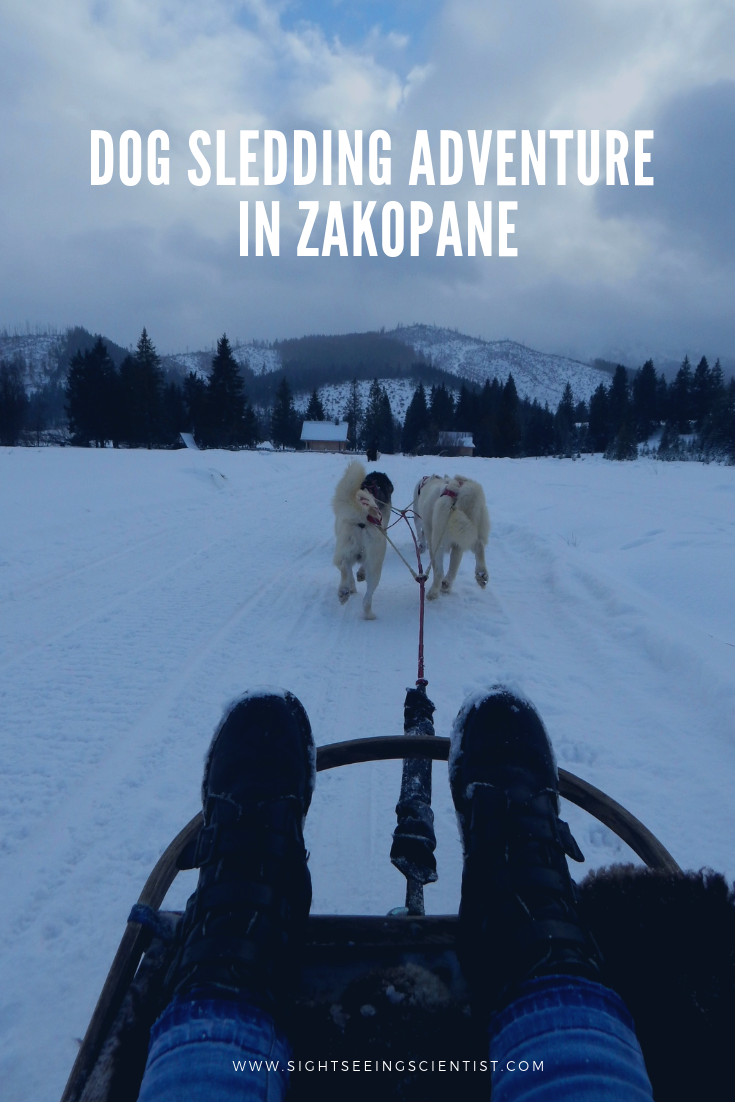Exploring the white winter landscapes of Europe on a sled pulled by excited and eager dogs…Yes please! As an animal lover and husky owner myself, this activity has grabbed my attention for the last couple of years. In January, I finally checked dog sledding off my bucket list. And you know what, the experience was even better than I imagined.
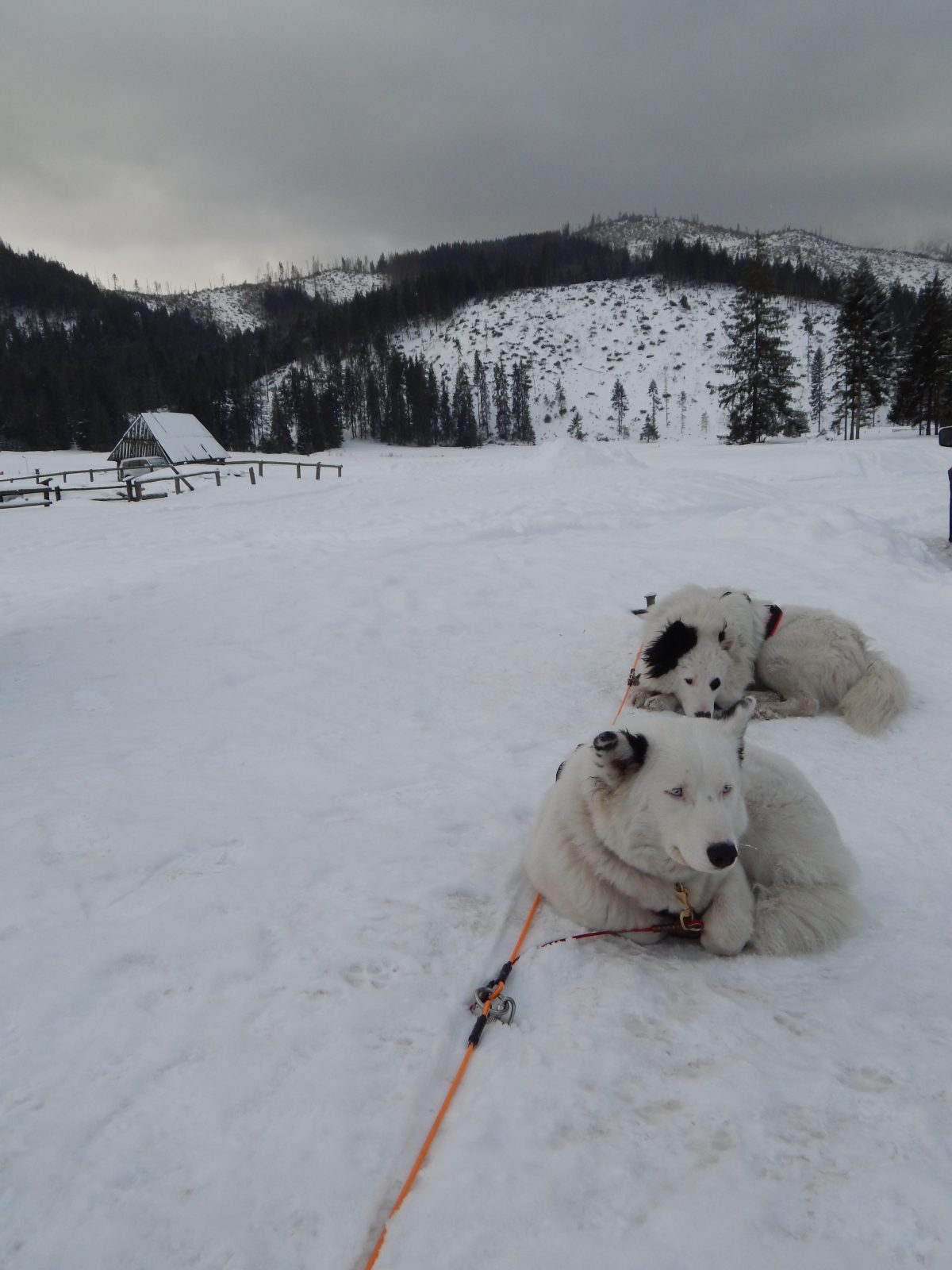
My dog sledding adventure took place just outside the winter capital of Poland, Zakopane. I booked through a local company called Fun Dog. It’s a small, family-owned business run by Malgorzata and her father, who is a retired national Polish dog sledding champion. I selected the one hour program which included transport, interaction with the dogs and of course, sledding.
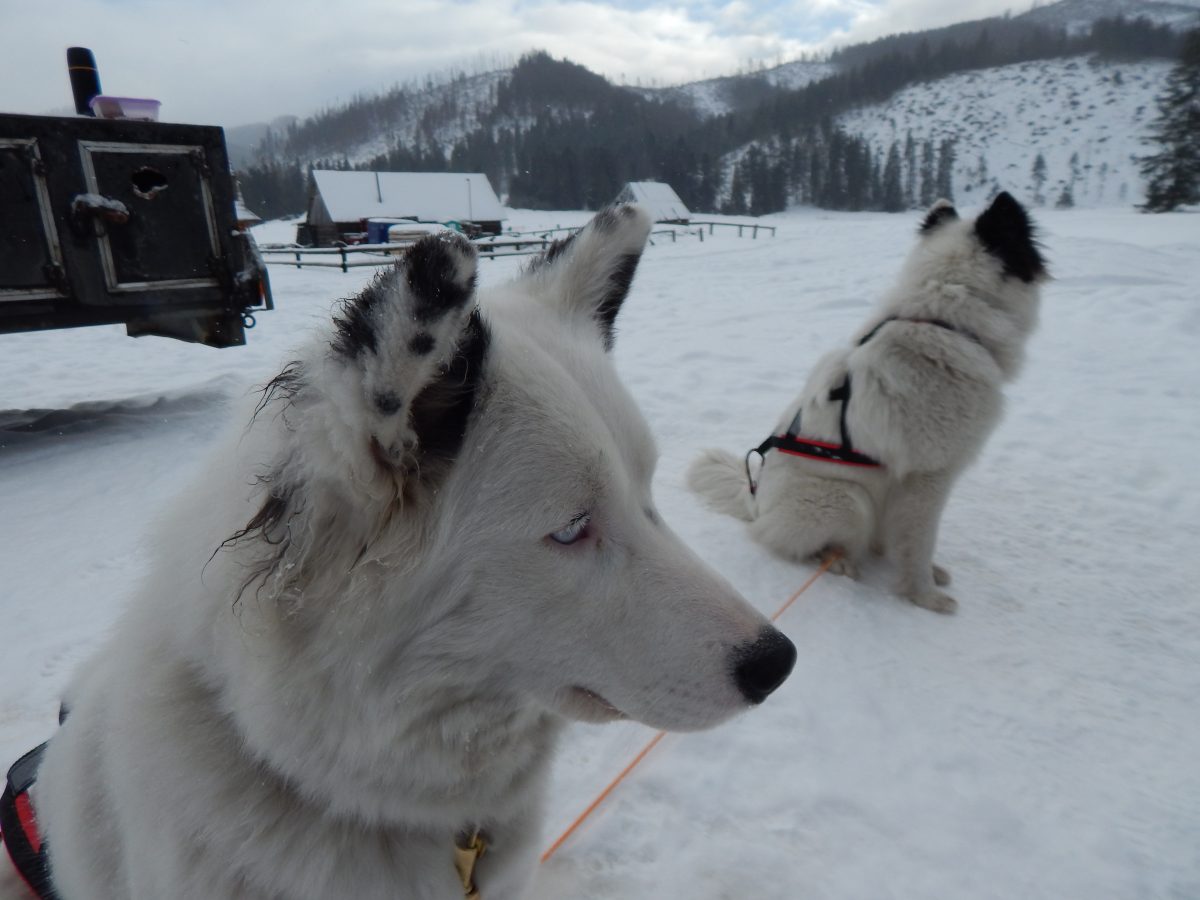
Upon arrival, the first thing I did was play with and say hello to all the dogs. Malgorzata invited her friends and their dogs to join for the day, so overall there were five different dog breeds present: Siberian huskies, Malamutes, a couple of cross breeds and a local Polish breed.
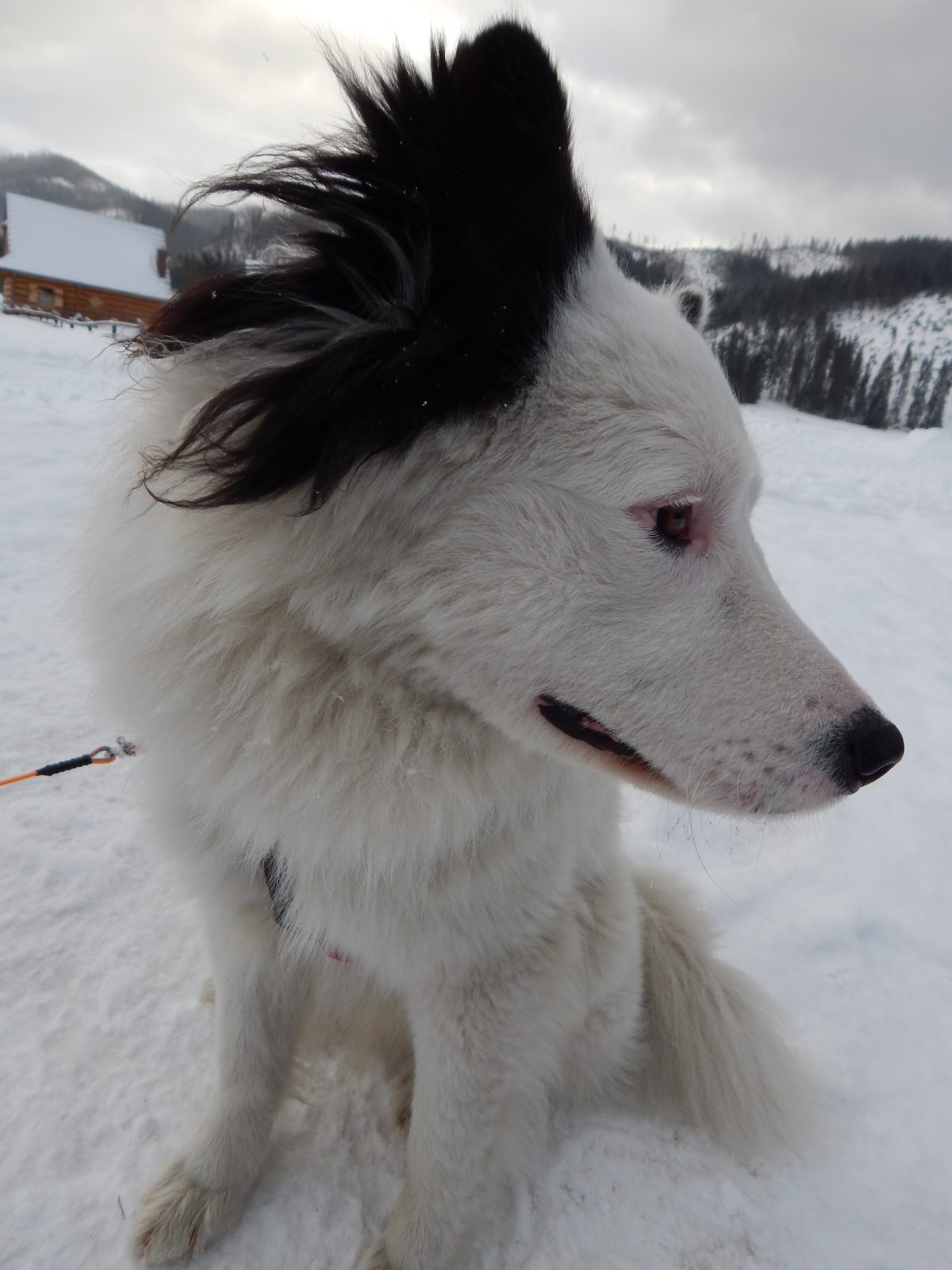
The dogs were really friendly! They love and thrive on human interaction and their excitement was contagious! They literally couldn’t wait to start working and pulling a sled.
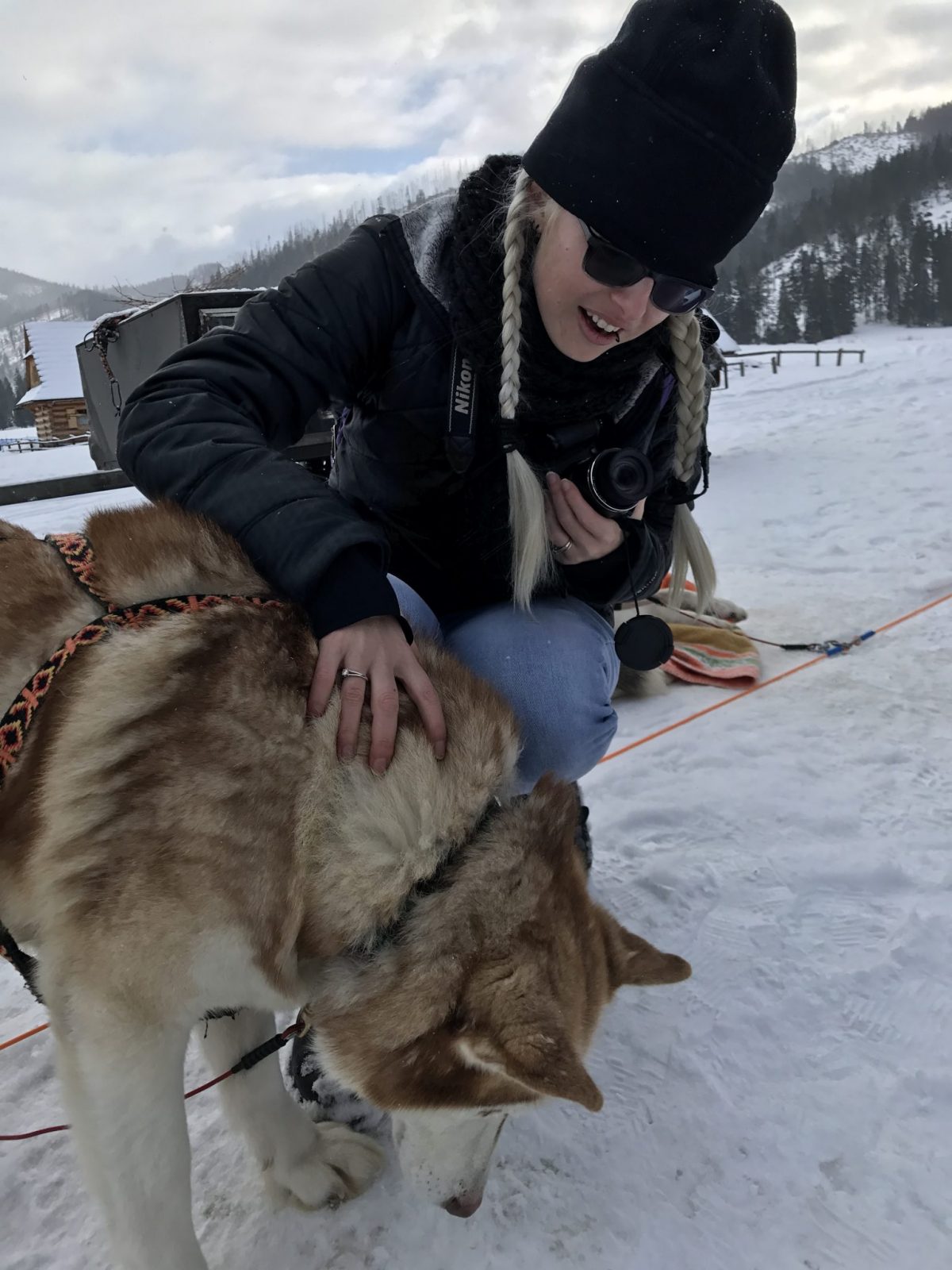
Say what?
Malgorzata is very knowledgeable and I learned a lot about the dogs and sledding. For instance, can you guess the record weight pulled by a single Siberian husky? Go on, I bet it’s higher than you think. The record weight pulled is a staggering 1.2 tons!
The basics of dog sledding
The sled is made of wood because it’s flexible and lightweight. The brake is located at the back of the sled. When getting in and out of the sled, always do so from the sides. Never get in from the front as the sled might be pulled forward and you might get injured.
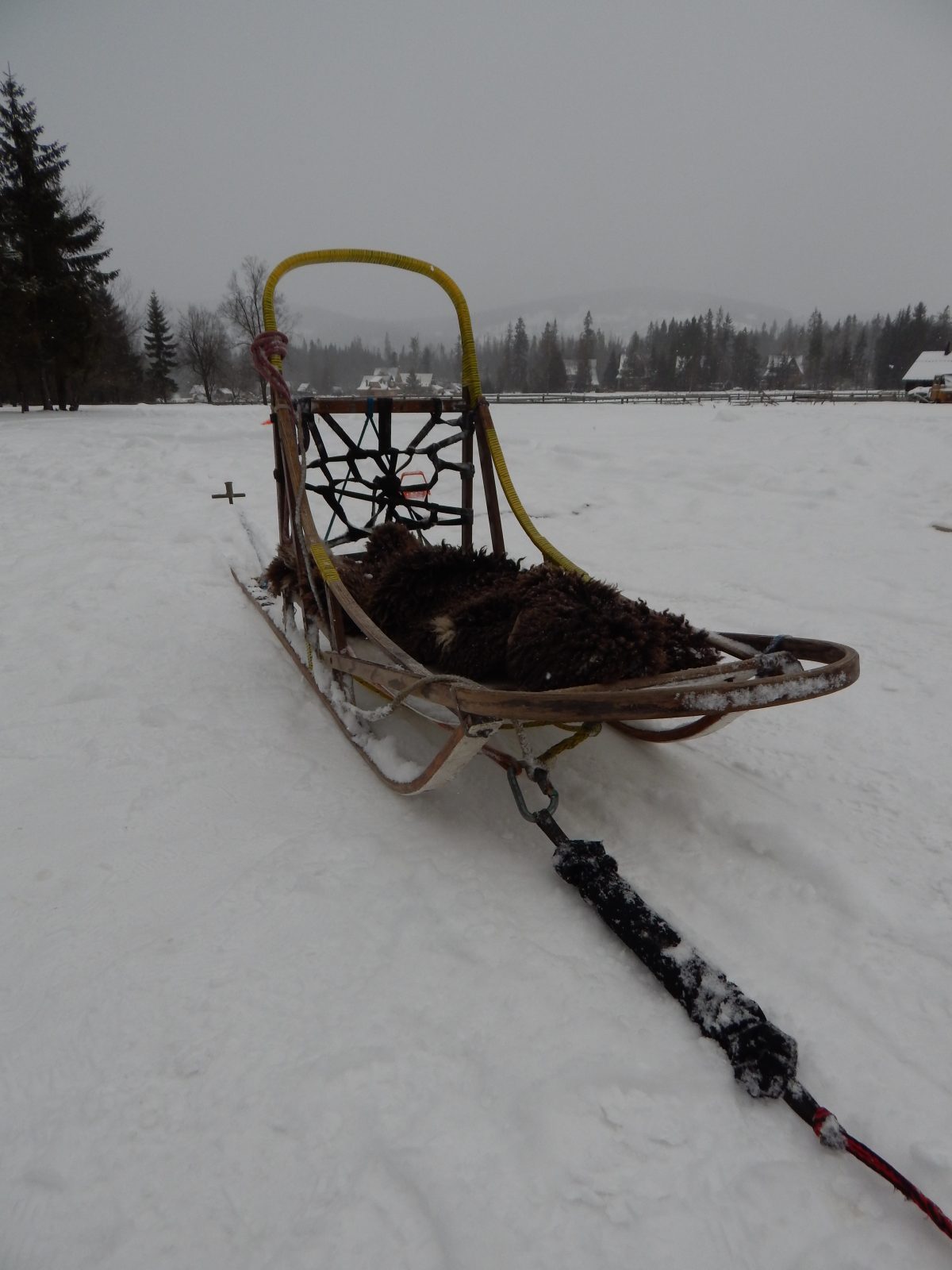
The dogs are placed in pairs in front of the sled. The strongest dogs are placed at the back of the pack, closest to the sled. Smart dogs are the leaders and placed at the front as they have to heed commands and navigate. Which dogs become leaders? Puppies are watched carefully from a young age to identify potential leadership qualities. They are then trained as leaders from the start. Training for sledding starts when the dogs are about three years old.
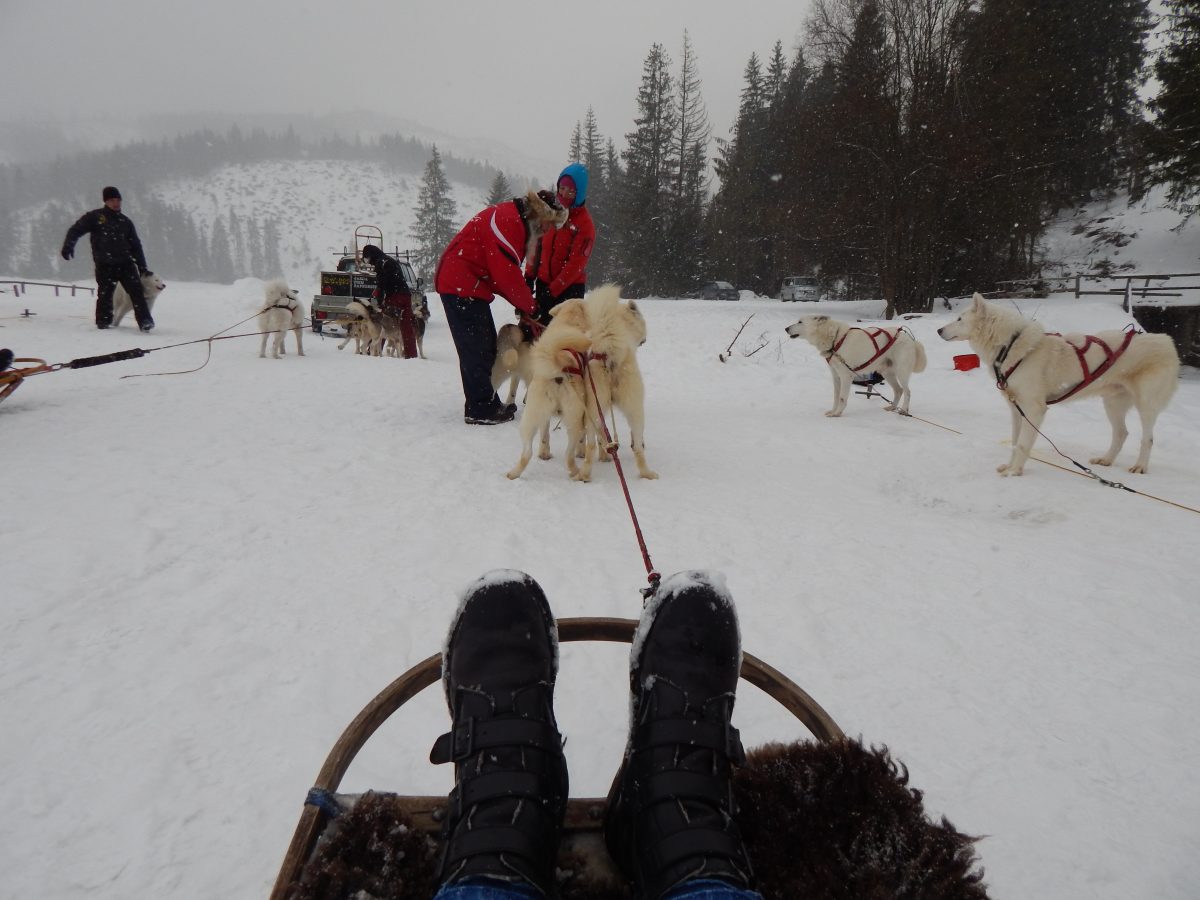
Sledding in the mountains
As the dogs were harnessed in, I made myself cosy in the sled. One. Two. Three. Off we went!
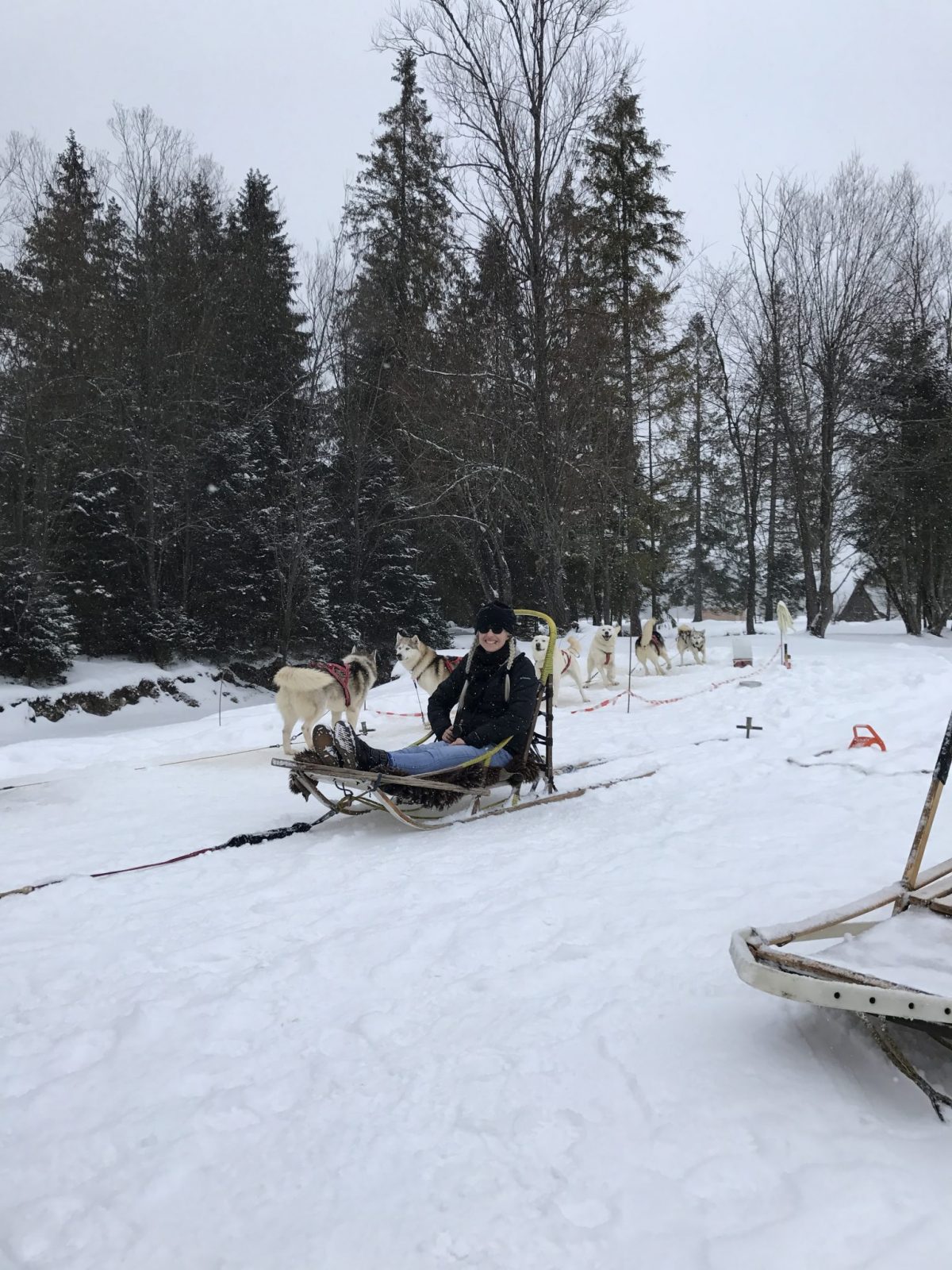
I’m going

The coolest part for me was when the dogs turned the sled around! It happened quickly so I had to keep my eyes peeled. Malgorzata’s father would shout a command to the leader dog. The dog upon hearing the command would nudge its neighbour and together they would turn the sled around.
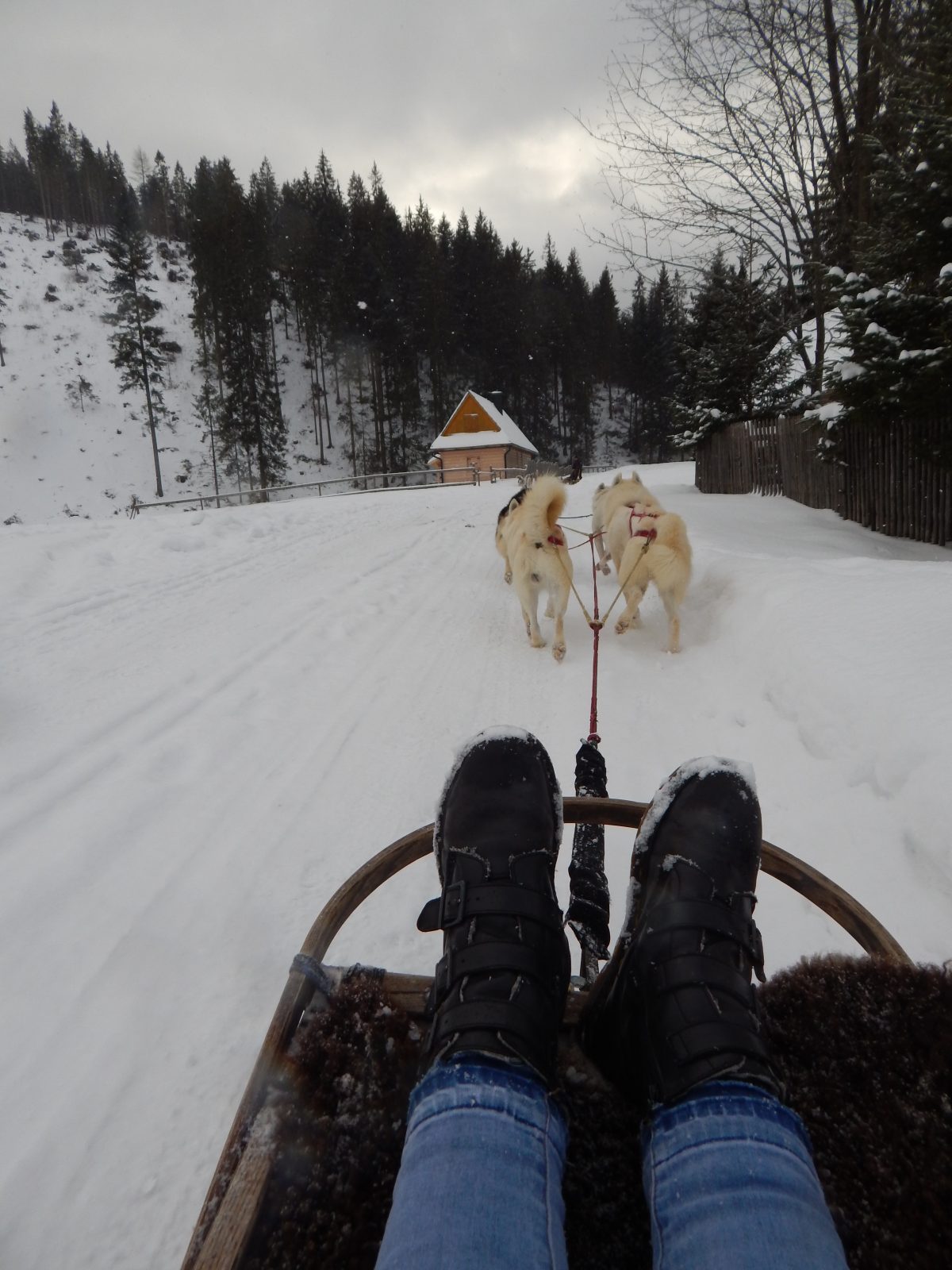
After the sledding, the dogs were quite thirsty. As they waited for their water, they munched down on the snow around them. With drinking and eating out of way, it was time for a nap.
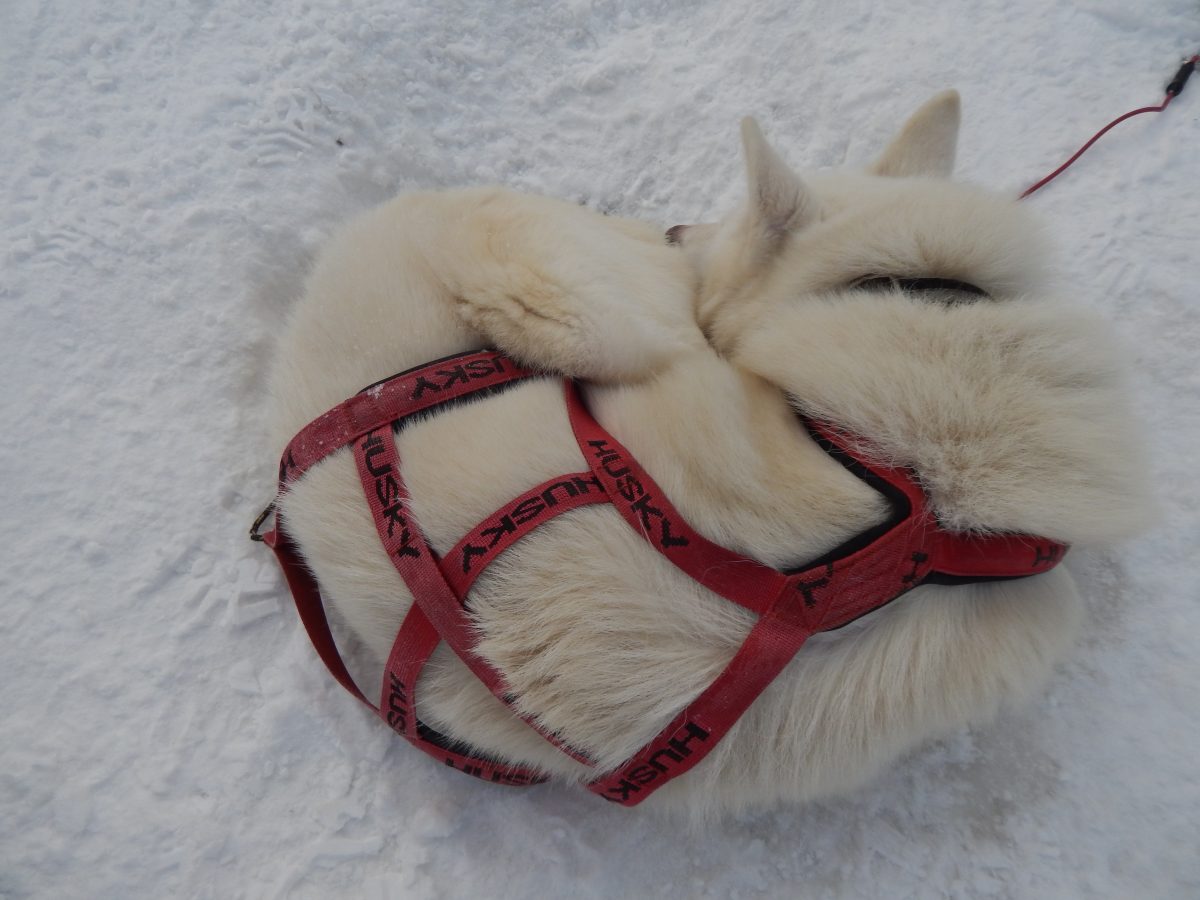
My favourite part
Malgorzata and her father own 17 huskies! What’s so amazing is that they take in abandoned huskies, providing they are less than one year old. Often people purchase huskies because they are, let’s face it, so darn cute. But being a husky owner comes with a lot of responsibilities that some people simply cannot handle. When the husky then starts to act out (aka eating everything in sight), they no longer want it.
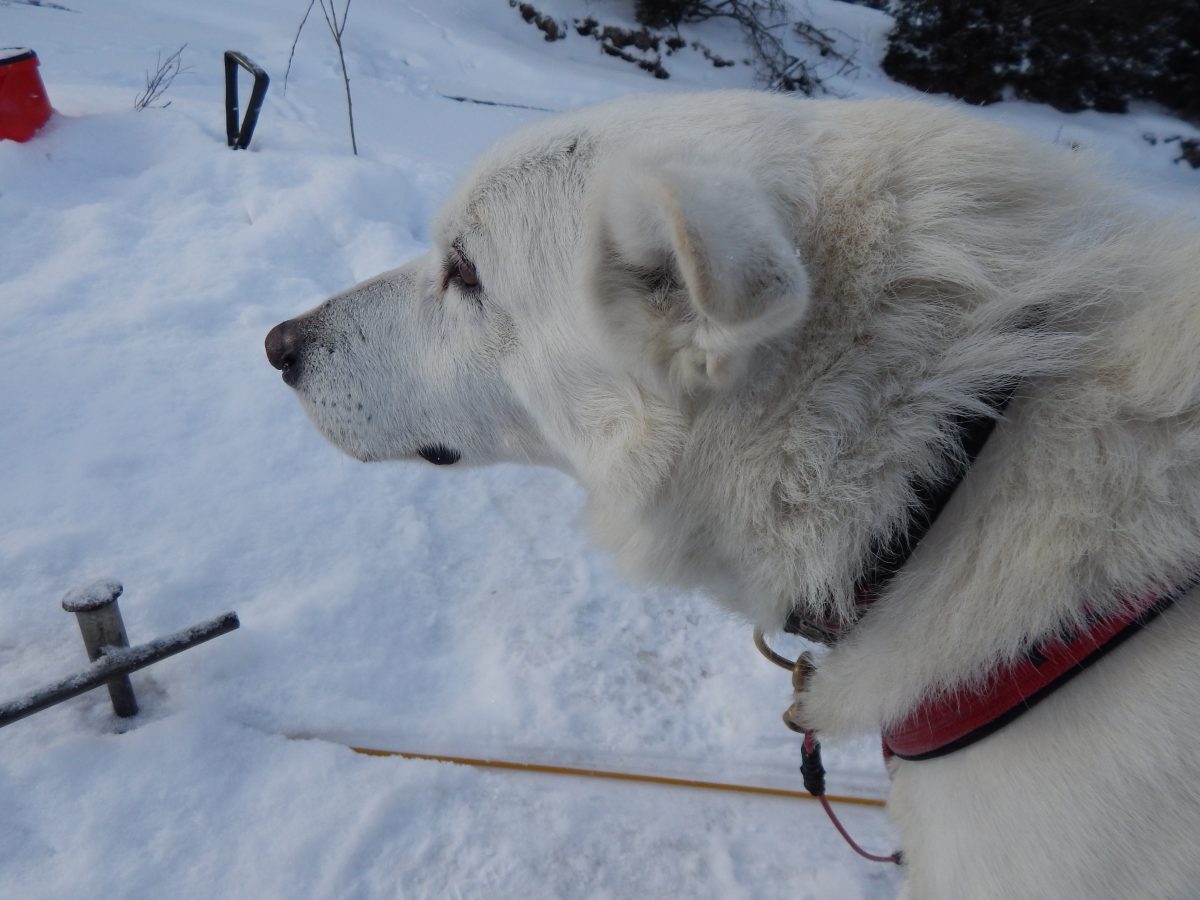
My favourite part of this whole experience was to observe the relationship between the dogs and the owners. There is a genuine, palpable love there! For example, one of the dogs had to be hand reared because its mother rejected it.
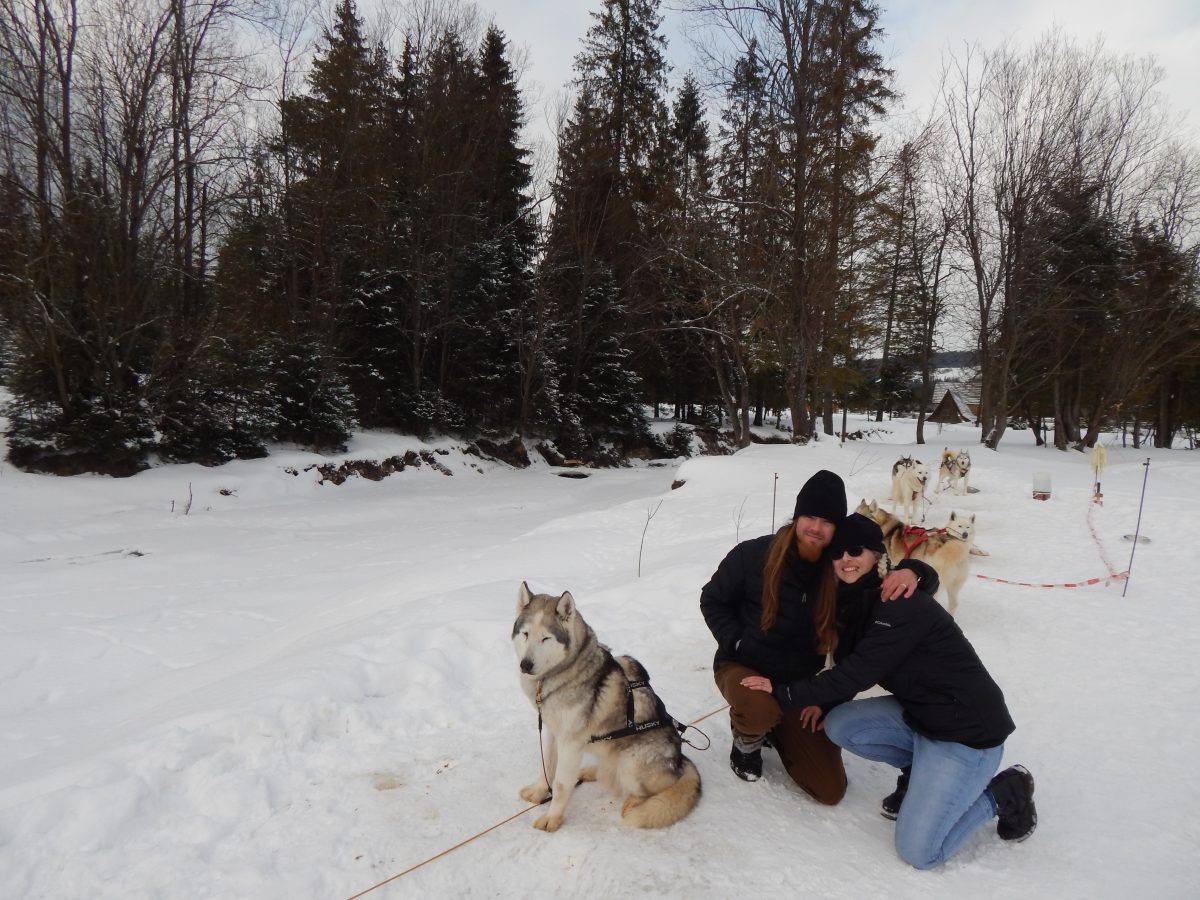
The total cost of this adventure was 430 PLN for two people including pick-up and transfers.
